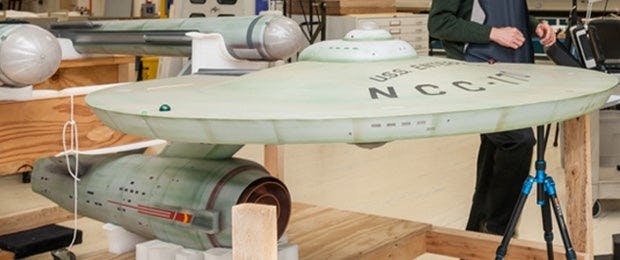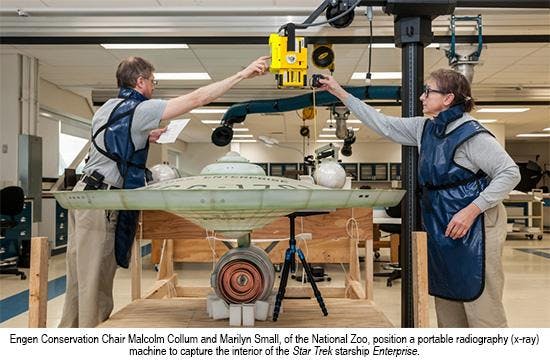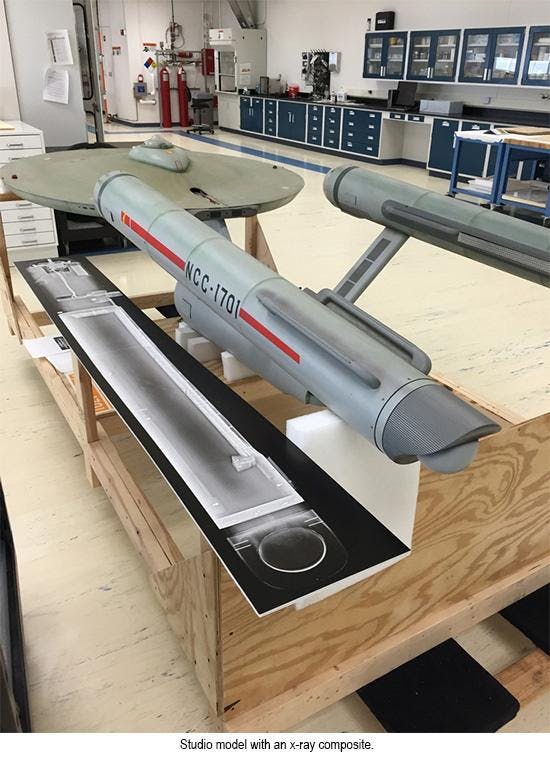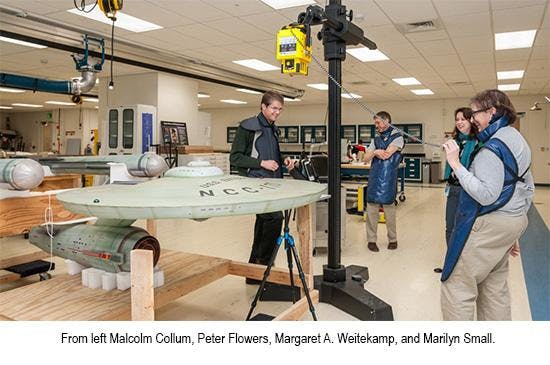Published Apr 23, 2015
GUEST BLOG: Inside the Enterprise Studio Model
GUEST BLOG: Inside the Enterprise Studio Model

Posted on April 21, 2015 by The National Air and Space Museum
As the Museum is assessing the 11-foot studio model of the Star Trek starship Enterprise, we’re trying to provide occasional updates to the many fans of this iconic artifact of American culture. The shooting model, which has been in the Museum’s collection since 1974, was removed from public display in September 2014 in order to be assessed and prepared for exhibit in the Boeing Milestones of Flight Hall, opening in July 2016. Right now, the Museum is completing a painstaking process of analyzing the model.Notably, conserving the Star Trek starship Enterprise studio model has allowed some wonderful cooperation between different branches of the Smithsonian institution. In December 2014 and again in January 2015, Tangara Cross of the National Zoological Park arranged for Marilyn Small and Peter Flowers, two National Zoo registered veterinary technicians (and Star Trek fans), to come to the Steven F. Udvar-Hazy Center in Chantilly, Virginia, to examine the model used in filming of the original Star Trek television series (1966–1969).

ID: NCC-1701Birthday: 1964Sex: OtherSaucer as the “skull”Secondary hull as the “body”Nacelles as the “legs”
The x-ray apparatus produced images in a special format called “dicom” (which Peter explained, “makes a jpeg look like a pencil sketch”). To get each image, Peter and Marilyn worked with Engen Conservation Chair Malcolm Collum and Museum photographer Dane Penland to line up the radiography machine on one side of the artifact with the photographic plate positioned exactly opposite on the other side. They planned the overlapping images to provide a complete tricorder-like diagnostic of the model’s interior. As each image was shot, the digital plate communicated via WiFi with the laptop, capturing the image. To avoid a magnification effect, they positioned the plate as close to the body of the model as possible. They got the perfect exposure on the first try, based on Peter and Marilyn’s expert calculations comparing the probable density of the model versus the known density of biological specimens.
Working slowly, the participants planned the exposures to allow the images to be “stitched” together so conservators can get a more complete picture of the artifact. Our photographer, Dane, advised on how best to overlap the images so that they could be matched once the images had been taken back to a zoo computer to be processed. The composite image of the left nacelle shown here has been put back together by Museum conservator Ariel O’Connor. When printed at full size, it gives the conservators a clear map of the interior of the model, without disturbing any of the original structure. It’s worth noting how much the technology has improved since the last time the Enterprise model was x-rayed in the 1990s.



Margaret A. Weitekamp is a curator in the Museum’s Space History Department.Check out the original version of the story HERE.
